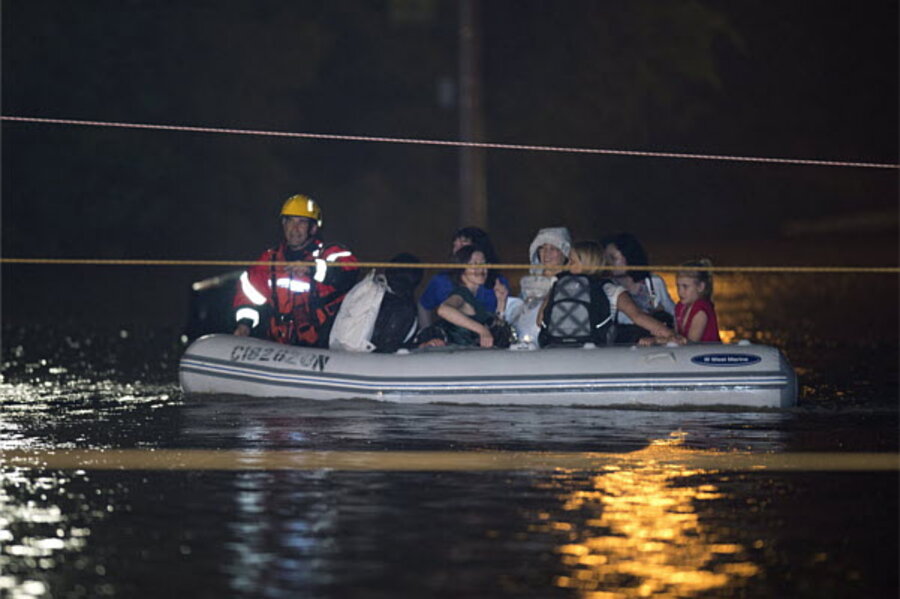Toronto storm: Toronto under water after record rainfall
Loading...
Flooded subway stations, submerged cars on the highway, and rescue teams floating through city streets on inflatable boats: The scenes sound like Hollywood, but in fact describe Toronto this morning, after rainfall flooded Canada's largest city.
A massive thunderstorm caused flash flooding throughout Toronto, making it the second Canadian city to be flooded this summer.
With nearly five inches (126 mm) of rain recorded at Toronto’s Pearson International Airport, the storm produced more precipitation than the city has ever seen, according to the Globe and Mail. The water overflowed out of the city’s drainage system, flooding the downtown area, and halting traffic on many of the roads and highways. Thousands of passengers aboard Toronto’s public transit system were left stranded for hours, while up to 500,000 residents were left without power.
GO Transit, Toronto’s public transport system, issued a statement to commuters this morning recommending that they find alternative routes because many of the tracks were still damaged, the Canadian Broadcasting Company (CBC) reported. Flooding of GO train rails left 1,400 people stuck on a commuter train for hours.
Mike Li, a commuter, told The Canadian Press the GO Transit train became stuck after trying to back away from the water pooling on a section of track.
"People take it for what it's worth, but some are frustrated too," he said.
The commuters were stranded for more than three hours before a police marine unit arrived. The evacuation of the train was complete by about 1 a.m. with only minor injuries to five or six passengers, who were treated on the scene.
After the waters have been cleared, the trains will need to be inspected for mechanical and safety issues, meaning public transit may be down for a while.
According to Canadian television network CTV, power has returned to most houses, though as of early Tuesday morning 20,000 Toronto residents were still left in the dark.
The rainfall broke Toronto’s past record from 1954’s Hurricane Hazel, which dropped 4.76 inches (121 mm) of rain onto the city, reports CNN. The rain caught most people off guard because they had never seen a storm like it before.
"My power outage lasted for about five hours, but luckily, my neighborhood didn't have any flooding issues," said Angie Filipowich in neighboring Mississauga to CNN. "So much rain in so little time. I don't ever remember seeing all this flooding here ... ever."
This storm makes Toronto the second Canadian city to fall victim to Mother Nature's wet fury this summer. Last month, Calgary was inundated with torrential rains that caused flooding throughout the city and the surrounding area, wrote The Christian Science Monitor. Approximately 100,000 people were evacuated from their homes.
Now, as Torontonians get themselves back on their feet, they may have to brace for more storms coming tonight and tomorrow. According to the Toronto Star, more thunderstorms will bring heavy rainfall tonight. And tomorrow could see harsh winds and even hail.







